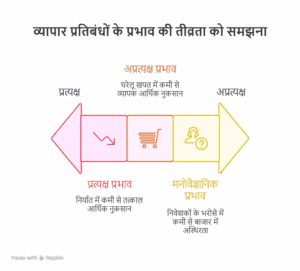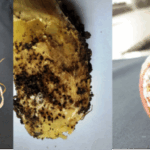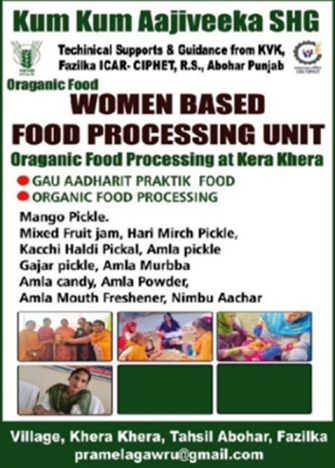14 Jul Seed Treatment: The First Step to a Bountiful Harvest
बीज उपचार: भरपूर फसल की ओर पहला कदम
Seed treatment is essential for high-quality seed production and healthy crop growth. It protects crops from sap-sucking pests during the early stages and prevents diseases transmitted through seeds and soil. Various fungicides, insecticides and biological agents are used for seed treatment.
This process not only improves seed germination rates but also ensures crops remain healthy and resilient against pests and diseases. Farmers, particularly those cultivating various crops in the rabi season, should select high-quality, disease-resistant crop varieties and ensure they perform seed treatment.
Seed treatment in different crops:
Rice : For rice farmers, if using wet nursery beds, mix 3 grams of Carbendazim per kilogram of seeds and coat them before spreading the seeds in the nursery bed. For dry nursery beds, soak the seeds for 24 hours in a solution of 1 gram of Carbendazim per liter of water, then spread the sprouted seeds in the nursery bed. One liter of this solution is sufficient to soak one kilogram of seeds. Treating seeds with this fungicide can prevent early-stage diseases such as blast and leaf spot. Additionally, before transplanting rice seedlings, soaking the seed bundles for 12 hours in a solution of 1.6 ml of Chlorpyrifos 50% EC per liter of water can protect the crop from stem borers, leaf blight and green leafhoppers for the first 30 days after transplanting. This helps ensure a healthy start for the rice crop.
Sugarcane: During December and January, farmers planting sugarcane should ensure seed treatment is performed. Before planting, immerse the sets in a solution of 100 grams of Carbendazim and 50 ml of Imidacloprid per 200 liters of water for 15 minutes. This treatment helps prevent scale insects, termites, root borers and sett rot diseases. Additionally, the sets should be treated by soaking in hot water at 52°C for 30 minutes or by exposing them to moist hot air at 54°C for 2 hours. This helps prevent grassy shoot disease, leaf scald and smut diseases.
Maize: In areas where crops are frequently affected by stem rot, leaf blight and smut, it’s essential to treat seeds with 3 grams of Mancozeb per kilogram of seed. To control fall armyworm and pink stem borers, seeds should be treated with a mixture of 4 ml of Thiamethoxam and Cyantraniliprole per kilogram of seed. This seed treatment helps protect the crops from these pests and diseases.
Chickpea: For chickpea cultivation, treat one kilogram of seeds with either 2.5 grams of Carbendazim or 3 grams of Carboxin + Thiram (Vitavax Power) before planting. In areas prone to dry root rot, coat the seeds with 10 grams of Trichoderma viride per kilogram of seed before sowing. To enhance nitrogen fixation, treat 8 kilograms of seeds, which is enough for one acre, with 200 grams of Rhizobium culture before planting. This seed treatment helps ensure healthy crop growth and protection against diseases.
Soybean: For the next rainy season, farmers growing soybeans during the summer should ensure they perform proper seed treatment to produce high-quality seeds. To protect the crop from early-stage root rot and leaf spot diseases, treat one kilogram of seeds with 1 gram of Carbendazim or 3 grams of Thiram or Captan. After this, treat the seeds with 1.5 ml of Imidacloprid 48% to guard against sap-sucking insects and stem borers.
Next, mix 200 grams of Rhizobium culture with enough water and adhesive for every 10 kilograms of seeds, coat the seeds and let them dry in the shade for half an hour before sowing. This treatment enhances nitrogen fixation, resulting in higher yields.
Groundnut: To prevent leaf spot and stem rot diseases in the early stages of crop growth, treat one kilogram of seeds with either 3 grams of Mancozeb or 1 gram of Carbendazim. In areas prone to root grubs, treat one kilogram of seeds with 7 ml of Chlorpyrifos. This seed treatment will help protect the crops from these specific diseases and pests.
Redgram: To prevent dry root rot in redgram transmitted through seeds, it is crucial to cultivate disease-resistant varieties and treat one kilogram of seeds with 10 grams of Trichoderma viride. Afterward, treat seeds sufficient for one acre with 200 grams of Rhizobium culture. This seed treatment enhances disease resistance and supports healthier crop growth.
Greengram and blackgram: To protect crops from leaf blight diseases, treat one kilogram of seeds with 2.5 grams of Mancozeb. For safeguarding crops against sap-sucking insects in the early stages, treat one kilogram of seeds with 5 ml of Imidacloprid or Monocrotophos.
For crops like pigeon pea, green gram and black gram, treat seeds sufficient for one acre with 200 grams of the specified Rhizobium culture. This enhances nitrogen fixation and increases the likelihood of achieving higher yields.
Sunflower: In areas prone to Alternaria leaf spot in sunflower, farmers should treat one kilogram of seeds with a mixture of 2 grams of Iprodione 25% + Carbendazim 25%. Additionally, to prevent sap-sucking insects like whiteflies and green leafhoppers in the early stages of crop growth, treat one kilogram of seeds with 5 ml of Imidacloprid. This seed treatment helps protect the crops from these specific diseases and pests.
Chilli: To protect crops from viral diseases, dissolve 150 grams of trisodium orthophosphate in one liter of water and soak the seeds in this solution for 20 minutes. After soaking, shade dry the seeds. Next, treat the seeds with 3 grams of Mancozeb or Captan to prevent damping-off. Finally, to avoid infestations from sap-sucking pests in the early stages of crop growth, treat the seeds with 3 ml of Imidacloprid 600FS per kilogram of seed. This comprehensive seed treatment protocol ensures robust crop protection against viral diseases, damping-off and early pest infestations
Conclusion: In this way, farmers should ensure that they perform seed treatment in the correct sequence: first using fungicides, followed by insecticides and finally biological agents. By doing so and implementing timely crop protection measures, they can achieve higher yields. Additionally, consistent monitoring and adapting to pest and disease pressures are crucial for maintaining crop health. Employing integrated pest management (IPM) strategies can further enhance productivity and sustainability. Proper seed treatment not only boosts germination rates but also strengthens the plants against various threats, ensuring a bountiful harvest.
Authors:
M. Saicharan, K. Rajesh, G. Sushma, E. Praveen Kumar and A. Krishnaveni
College of Agriculture, Rajendranagar
Professor Jayashankar Telangana Agricultural University, Hyderabad
Corresponding author : munpally33@gmail.com
Related Posts
………………………………………
Related Posts





